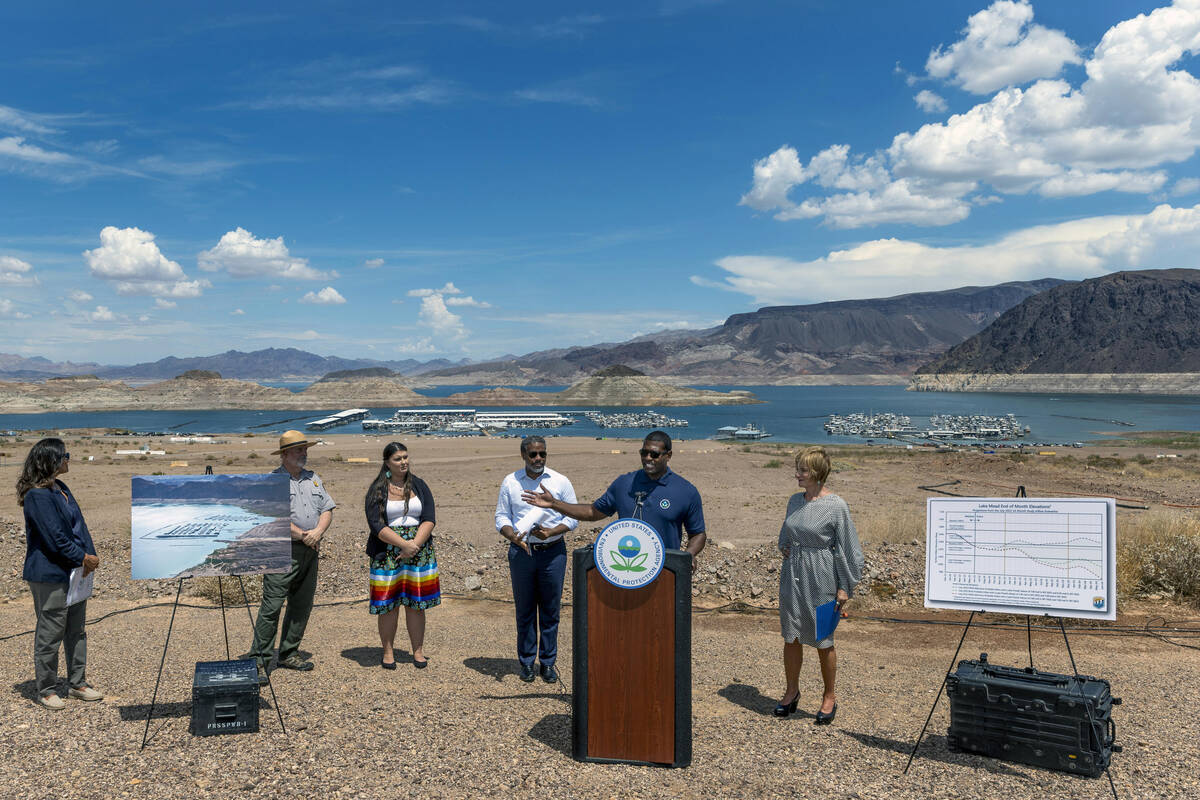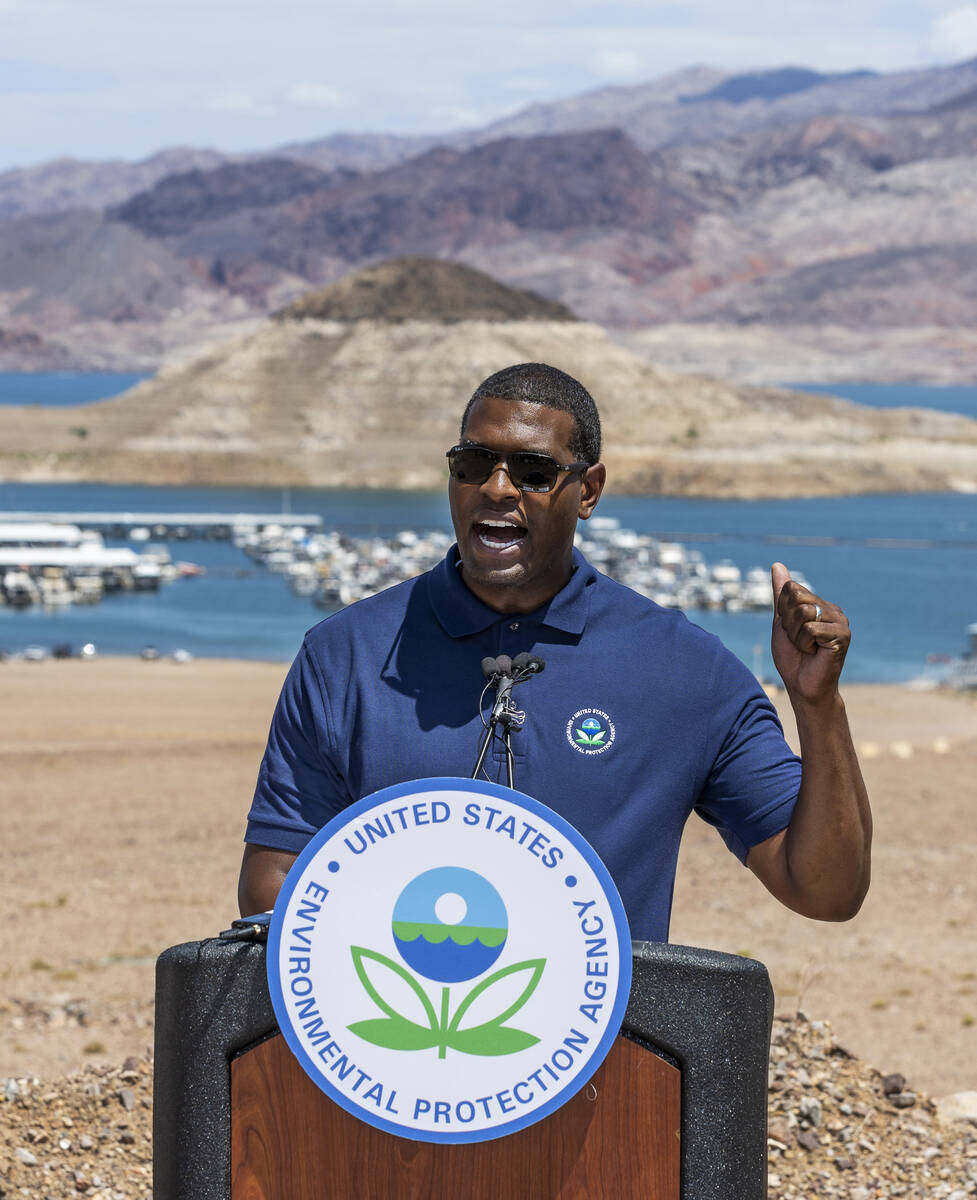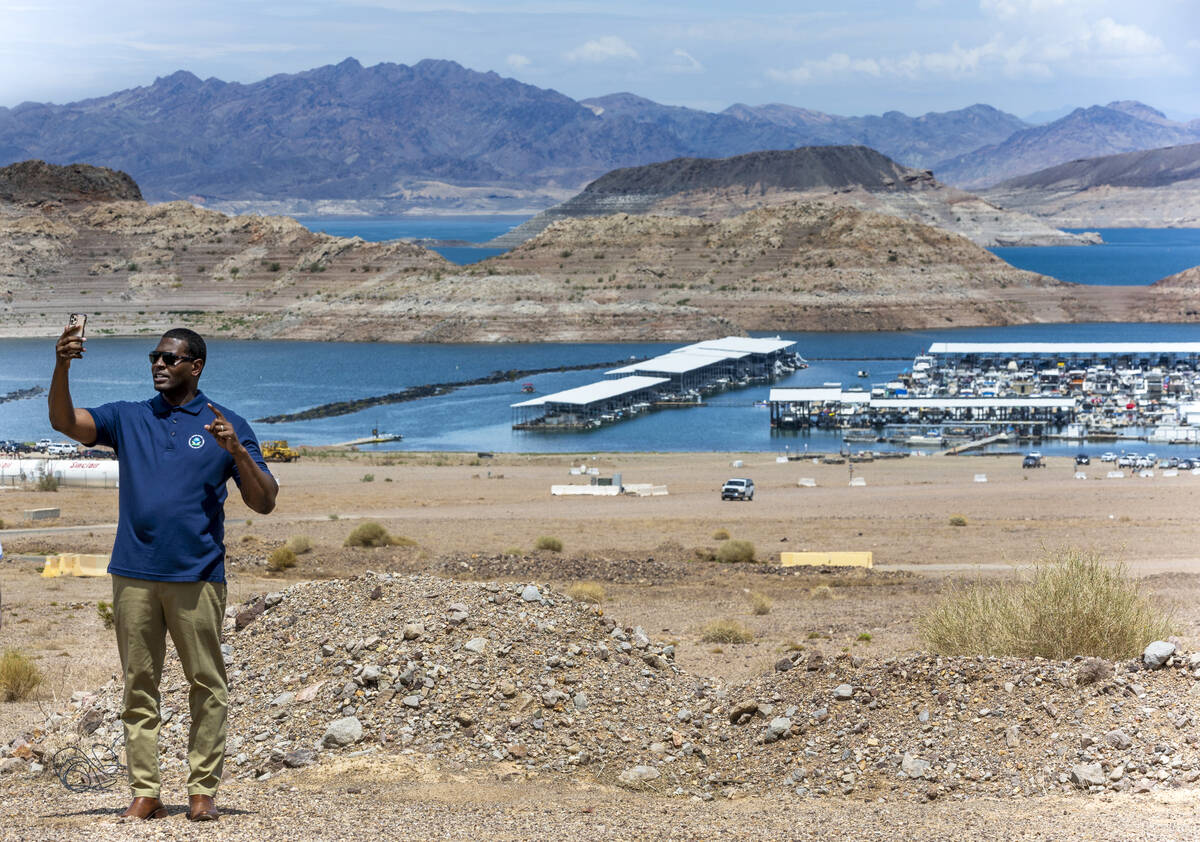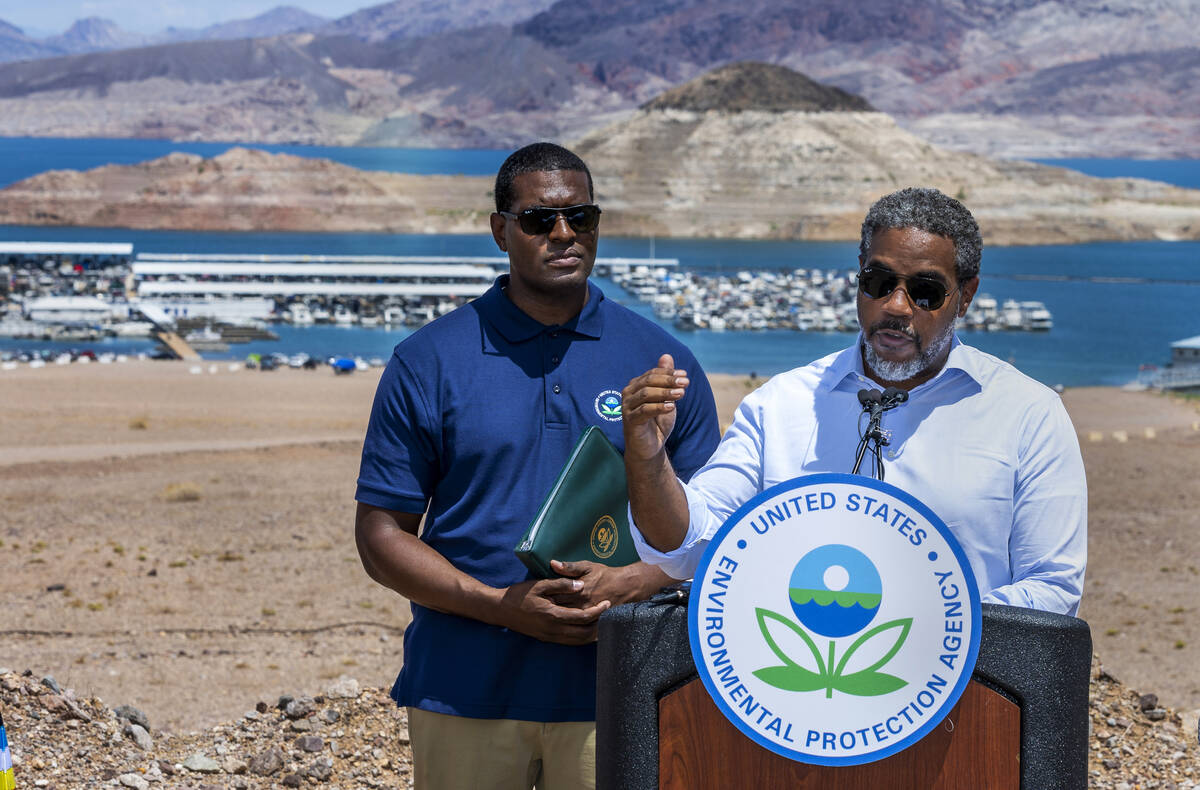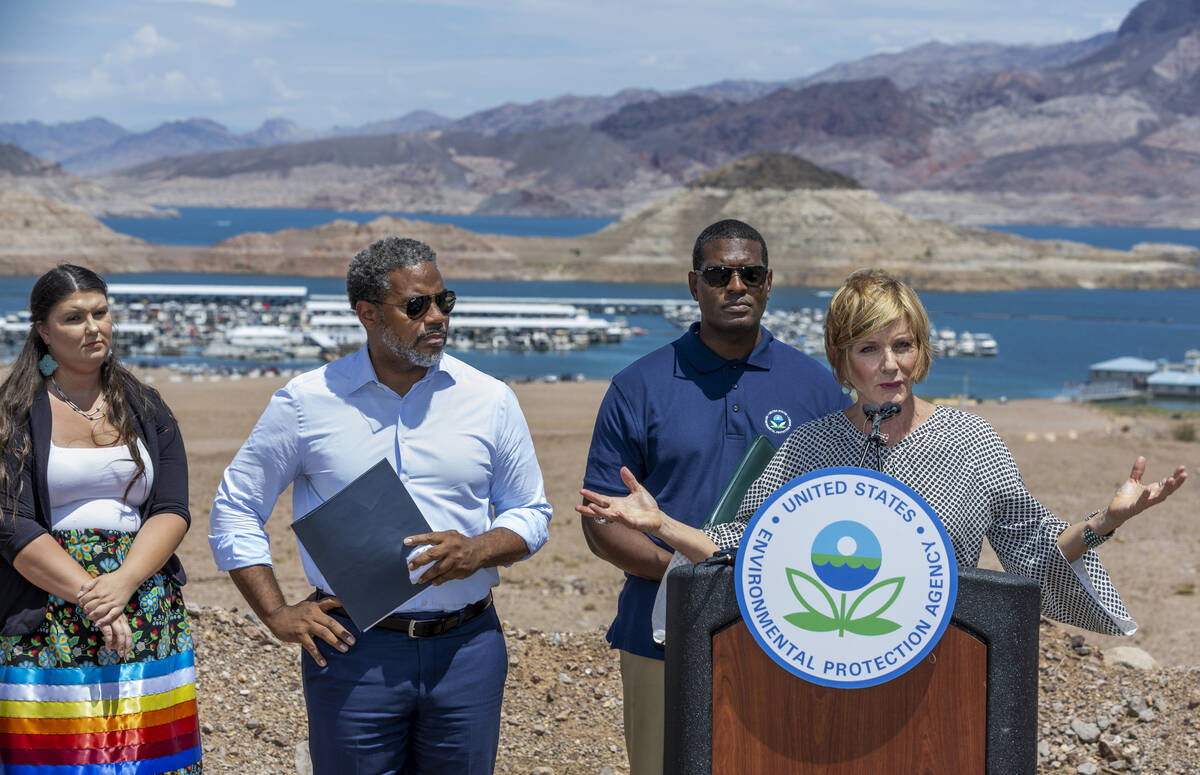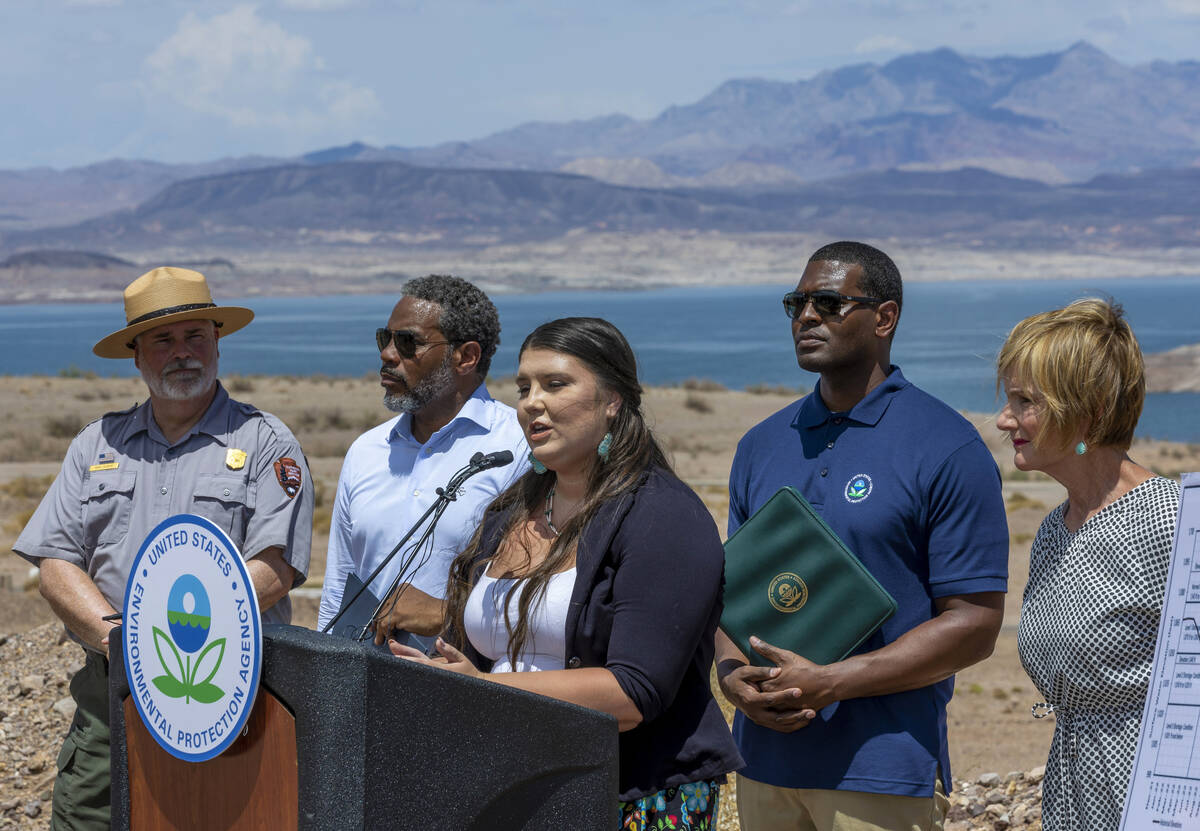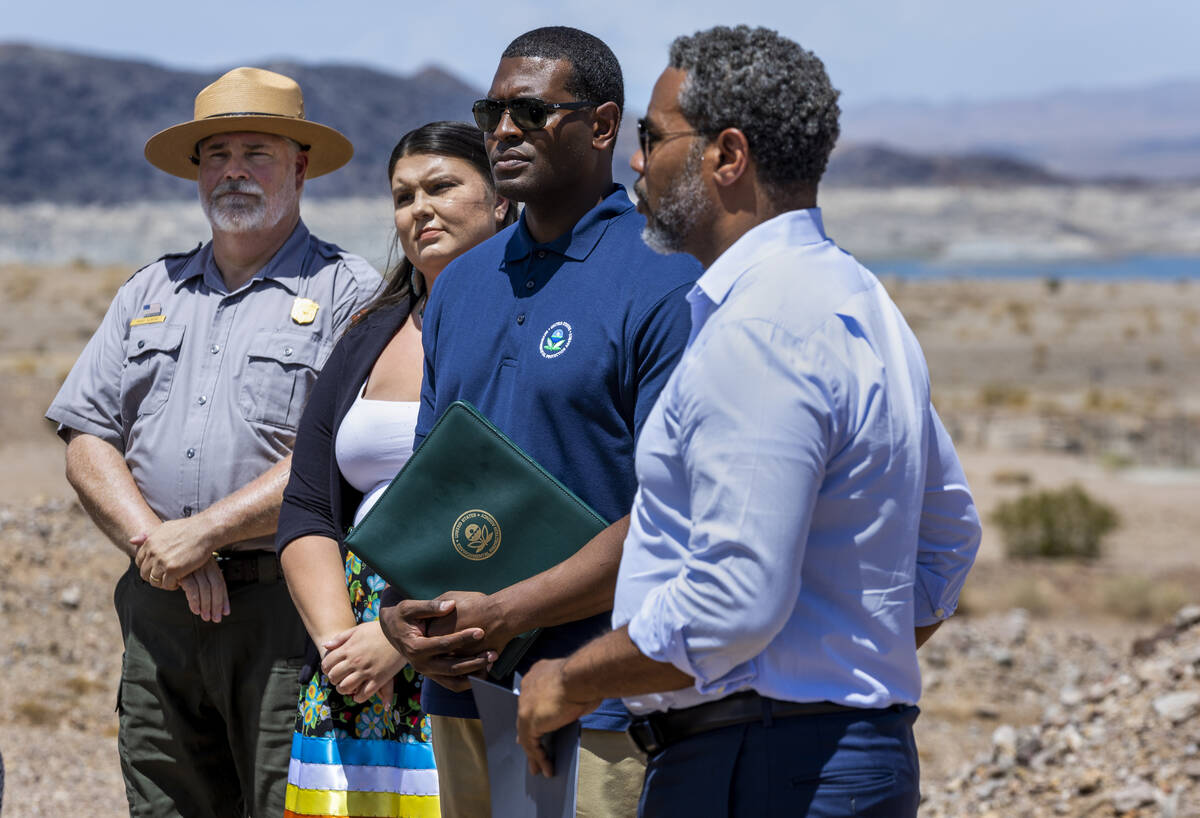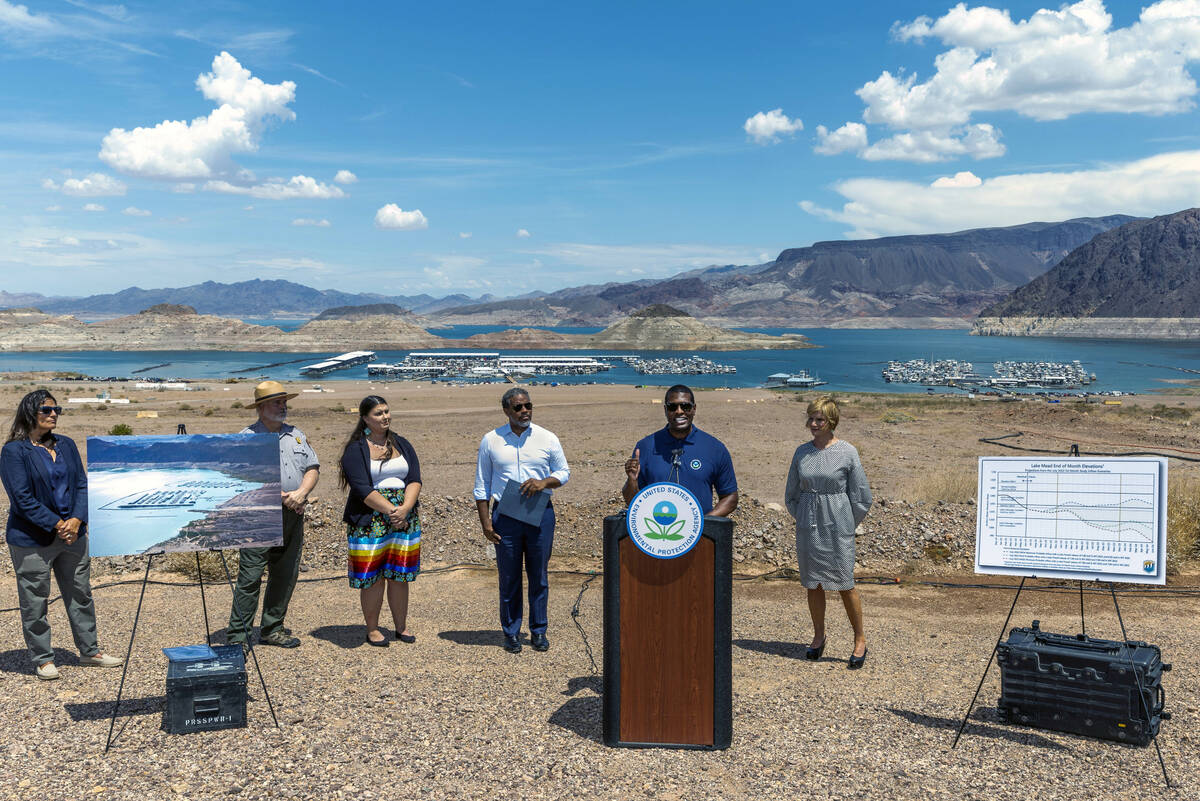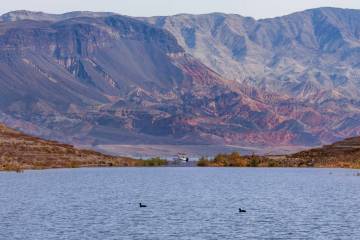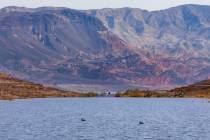Nevada Democrats tout bill to address water crisis in West
Nevada Democrats and Biden administration officials on Thursday touted the proposed Inflation Reduction Act as a significant step in addressing the state’s water woes.
With Lake Mead’s growing bathtub ring as a foreboding backdrop, Environmental Protection Agency Administrator Michael S. Regan and Nevada Democratic Reps. Steven Horsford and Susie Lee discussed the $4 billion included in the legislation earmarked for combating the effects of the two-decades-long Western drought and stabilizing water supplies along the Colorado River.
Democrats in the U.S. Senate passed the bill Sunday with no Republican support, and the House is scheduled to vote on it Friday.
“There is no more important moment than now to take action to help preserve and protect Lake Mead and to address the climate crisis and the drought,” Horsford said during Thursday’s event.
Regan’s visit to Southern Nevada comes on the cusp of a momentous week for the states that rely on water from the Colorado River.
Bureau of Reclamation Commissioner Camille Touton gave the seven Colorado River basin states until next week to come up with proposals to cut between 2 million and 4 million acre-feet of water use from the river next year as the outlook for the Southwest continues to look hotter and drier. On the high end, those cuts would represent about one-third of the Colorado’s recent annual flows.
If the states can’t come to an agreement, Touton warned that the federal government would step in to make those decisions itself.
The bureau is also expected to release its updated two-year projections for Lake Mead’s water level on Tuesday that are expected to trigger further cuts to Southern Nevada’s annual water allotment.
Lake Mead is currently in a Tier 1 shortage, which reduced Nevada’s allocation from the Colorado by 21,000 acre-feet, or about 7 percent. Those reductions are expected to increase in 2023, with the amount depending on Tuesday’s projection.
Lake Mead, the nation’s largest reservoir, has fallen by about 170 feet since the current drought began in 2000 and currently sits at 27 percent capacity, according to data from the Bureau of Reclamation.
“Nevada knows the impact of climate change firsthand,” Regan said. “And there isn’t a clearer example than the frightening lower water levels here at Lake Mead.”
Regan, who said he was making his first visit to Lake Mead, emphasized the immediate need to get those drought funds into the hands of water managers and local governments.
“We should have been moving yesterday,” he said. “We have to keep pace with addressing this crisis.”
Regan added, “We’re talking about billions of dollars that we can pass through as grants and loans that will help local communities not only in Nevada, but in Arizona, California and those states along the Colorado River.”
The funds would be used to buy private water rights and help municipalities with environmental restoration and conservation projects aimed at increasing water levels in the Colorado.
Those funds are likely to play a key role in the in meeting the call from Reclamation to dramatically reduce water use along the river.
Lee said that the funding will provide states like Nevada, Arizona and California with money to provide incentives to farmers to either change out their crops or fallow their fields as well as fund other types of measures like paying people to remove their grass lawns.
“We cannot create more water, but we can certainly manage it better and provide incentives to people to conserve it,” Lee said.
Contact Colton Lochhead at clochhead@reviewjournal.com. Follow @ColtonLochhead on Twitter.



